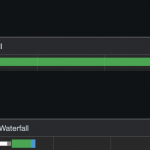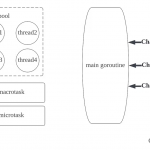最终,所有项目最终都需要加快服务响应或进行一些繁重的计算。快速简便的解决方案是使用缓存。通常,有 Redis 或 Memcached,但我们在单实例微服务中并不需要它们。有时在 Go 应用程序中使用简单的内存缓存会更好,今天我想向您展示实现它的主要方法。
简单地图
第一种方式是简单的显式缓存实现。通常,它使用 map 并在那里存储结构。此外,还需要观察密钥的过期时间和缓存大小。
我将所有实现都放在了一个 GitHub 存储库中。
package go_cache
import (
"errors"
"sync"
"time"
)
type user struct {
Id int64 `json:"id"`
Email string `json:"email"`
}
type cachedUser struct {
user
expireAtTimestamp int64
}
type localCache struct {
stop chan struct{}
wg sync.WaitGroup
mu sync.RWMutex
users map[int64]cachedUser
}
func newLocalCache(cleanupInterval time.Duration) *localCache {
lc := &localCache{
users: make(map[int64]cachedUser),
stop: make(chan struct{}),
}
lc.wg.Add(1)
go func(cleanupInterval time.Duration) {
defer lc.wg.Done()
lc.cleanupLoop(cleanupInterval)
}(cleanupInterval)
return lc
}
func (lc *localCache) cleanupLoop(interval time.Duration) {
t := time.NewTicker(interval)
defer t.Stop()
for {
select {
case <-lc.stop:
return
case <-t.C:
lc.mu.Lock()
for uid, cu := range lc.users {
if cu.expireAtTimestamp <= time.Now().Unix() {
delete(lc.users, uid)
}
}
lc.mu.Unlock()
}
}
}
func (lc *localCache) stopCleanup() {
close(lc.stop)
lc.wg.Wait()
}
func (lc *localCache) update(u user, expireAtTimestamp int64) {
lc.mu.Lock()
defer lc.mu.Unlock()
lc.users[u.Id] = cachedUser{
user: u,
expireAtTimestamp: expireAtTimestamp,
}
}
var (
errUserNotInCache = errors.New("the user isn't in cache")
)
func (lc *localCache) read(id int64) (user, error) {
lc.mu.RLock()
defer lc.mu.RUnlock()
cu, ok := lc.users[id]
if !ok {
return user{}, errUserNotInCache
}
return cu.user, nil
}
func (lc *localCache) delete(id int64) {
lc.mu.Lock()
defer lc.mu.Unlock()
delete(lc.users, id)
}
我们使用用户 ID 作为缓存项的键。由于有地图,所有更新/读取/删除都需要 O(1) 时间。
优点
- 显式实现
- 很棒的表演
缺点
- 为每个数据结构实现缓存的额外时间
- 额外的时间来测试缓存逻辑
- 额外的时间来修复错误
gCache 库
gCache 库抽象出缓存管理并包含各种配置。例如,您可以简单地设置缓存驱逐规则、最大大小、过期 TTL 等。
package go_cache
import (
"errors"
"fmt"
"github.com/bluele/gcache"
"time"
)
type gCache struct {
users gcache.Cache
}
const (
cacheSize = 1_000_000
cacheTTL = 1 * time.Hour // default expiration
)
func newGCache() *gCache {
return &gCache{
users: gcache.New(cacheSize).Expiration(cacheTTL).ARC().Build(),
}
}
func (gc *gCache) update(u user, expireIn time.Duration) error {
return gc.users.SetWithExpire(u.Id, u, expireIn)
}
func (gc *gCache) read(id int64) (user, error) {
val, err := gc.users.Get(id)
if err != nil {
if errors.Is(err, gcache.KeyNotFoundError) {
return user{}, errUserNotInCache
}
return user{}, fmt.Errorf("get: %w", err)
}
return val.(user), nil
}
func (gc *gCache) delete(id int64) {
gc.users.Remove(id)
}
优点
- 生产就绪的缓存管理
- 适用于任何数据类型的单一接口
- 不同的缓存驱逐策略:LRU、LFU、ARC
缺点
- 需要在每次读取时手动转换缓存值,导致性能不佳
- 图书馆有一段时间没有维护了
BigCache 库
BigCache 库是快速、并发、逐出内存缓存,可在不影响性能的情况下保留大量条目。BigCache 将条目保存在堆上,但忽略了它们的 GC。
package go_cache
import (
"encoding/json"
"errors"
"fmt"
"github.com/allegro/bigcache"
"strconv"
"time"
)
type bigCache struct {
users *bigcache.BigCache
}
func newBigCache() (*bigCache, error) {
bCache, err := bigcache.NewBigCache(bigcache.Config{
// number of shards (must be a power of 2)
Shards: 1024,
// time after which entry can be evicted
LifeWindow: 1 * time.Hour,
// Interval between removing expired entries (clean up).
// If set to <= 0 then no action is performed.
// Setting to < 1 second is counterproductive — bigcache has a one second resolution.
CleanWindow: 5 * time.Minute,
// rps * lifeWindow, used only in initial memory allocation
MaxEntriesInWindow: 1000 * 10 * 60,
// max entry size in bytes, used only in initial memory allocation
MaxEntrySize: 500,
// prints information about additional memory allocation
Verbose: false,
// cache will not allocate more memory than this limit, value in MB
// if value is reached then the oldest entries can be overridden for the new ones
// 0 value means no size limit
HardMaxCacheSize: 256,
// callback fired when the oldest entry is removed because of its expiration time or no space left
// for the new entry, or because delete was called. A bitmask representing the reason will be returned.
// Default value is nil which means no callback and it prevents from unwrapping the oldest entry.
OnRemove: nil,
// OnRemoveWithReason is a callback fired when the oldest entry is removed because of its expiration time or no space left
// for the new entry, or because delete was called. A constant representing the reason will be passed through.
// Default value is nil which means no callback and it prevents from unwrapping the oldest entry.
// Ignored if OnRemove is specified.
OnRemoveWithReason: nil,
})
if err != nil {
return nil, fmt.Errorf("new big cache: %w", err)
}
return &bigCache{
users: bCache,
}, nil
}
func (bc *bigCache) update(u user) error {
bs, err := json.Marshal(&u)
if err != nil {
return fmt.Errorf("marshal: %w", err)
}
return bc.users.Set(userKey(u.Id), bs)
}
func userKey(id int64) string {
return strconv.FormatInt(id, 10)
}
func (bc *bigCache) read(id int64) (user, error) {
bs, err := bc.users.Get(userKey(id))
if err != nil {
if errors.Is(err, bigcache.ErrEntryNotFound) {
return user{}, errUserNotInCache
}
return user{}, fmt.Errorf("get: %w", err)
}
var u user
err = json.Unmarshal(bs, &u)
if err != nil {
return user{}, fmt.Errorf("unmarshal: %w", err)
}
return u, nil
}
func (bc *bigCache) delete(id int64) {
bc.users.Delete(userKey(id))
}
我们使用 JSON 来编码/解码值,但也有机会使用任何数据格式。例如,其中一种二进制格式——Protobuf,可以显着提高性能。
优点
- 生产就绪的缓存管理
- 丰富的缓存配置
- 保持
- 缓存不会触发 GC,因此在大缓存大小上表现出色
缺点
- 需要实现值的编码器/解码器
基准
goos: darwin
goarch: amd64
pkg: go-cache
cpu: Intel(R) Core(TM) i5-8257U CPU @ 1.40GHz
Benchmark_bigCache
Benchmark_bigCache-8 1751281 688.0 ns/op 390 B/op 6 allocs/op
Benchmark_gCache
Benchmark_gCache-8 772846 1699 ns/op 373 B/op 8 allocs/op
Benchmark_localCache
Benchmark_localCache-8 1534795 756.6 ns/op 135 B/op 0 allocs/op
PASS
ok go-cache 6.044s
BigCache 是最快的缓存。由于需要从interface{}
结论
我们研究了 Golang 中不同的内存缓存方式。请记住,没有最佳解决方案,这取决于具体情况。使用文章比较解决方案并确定哪一个适合您的项目需求。



